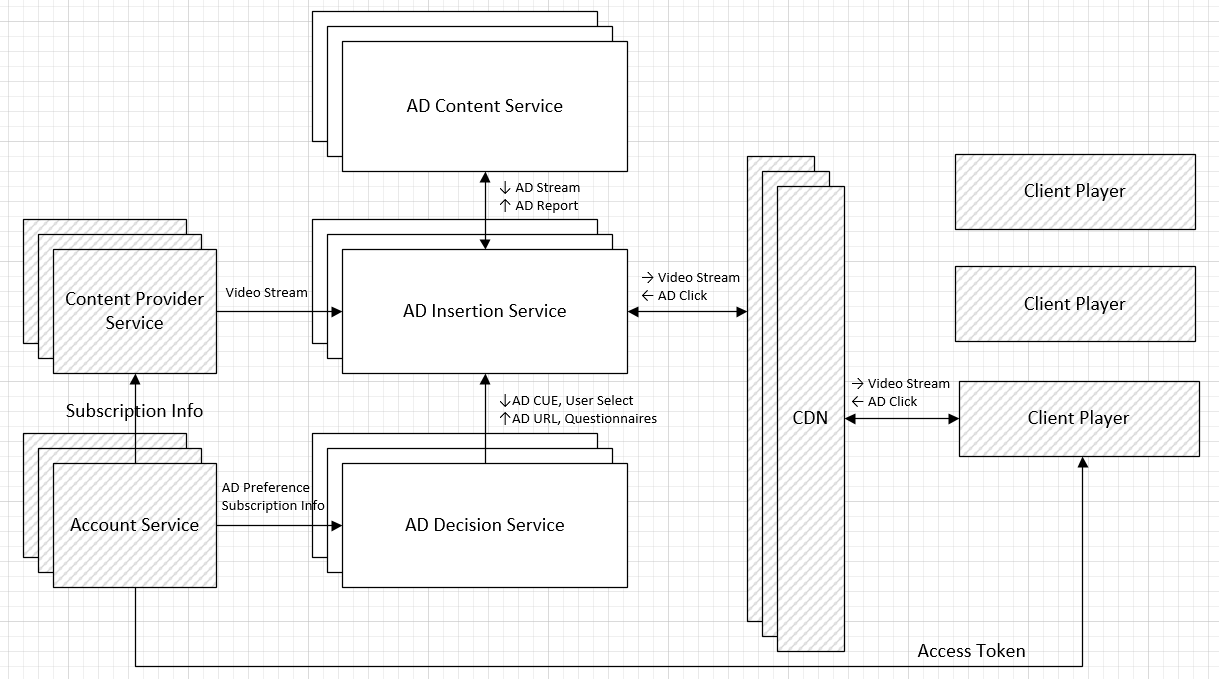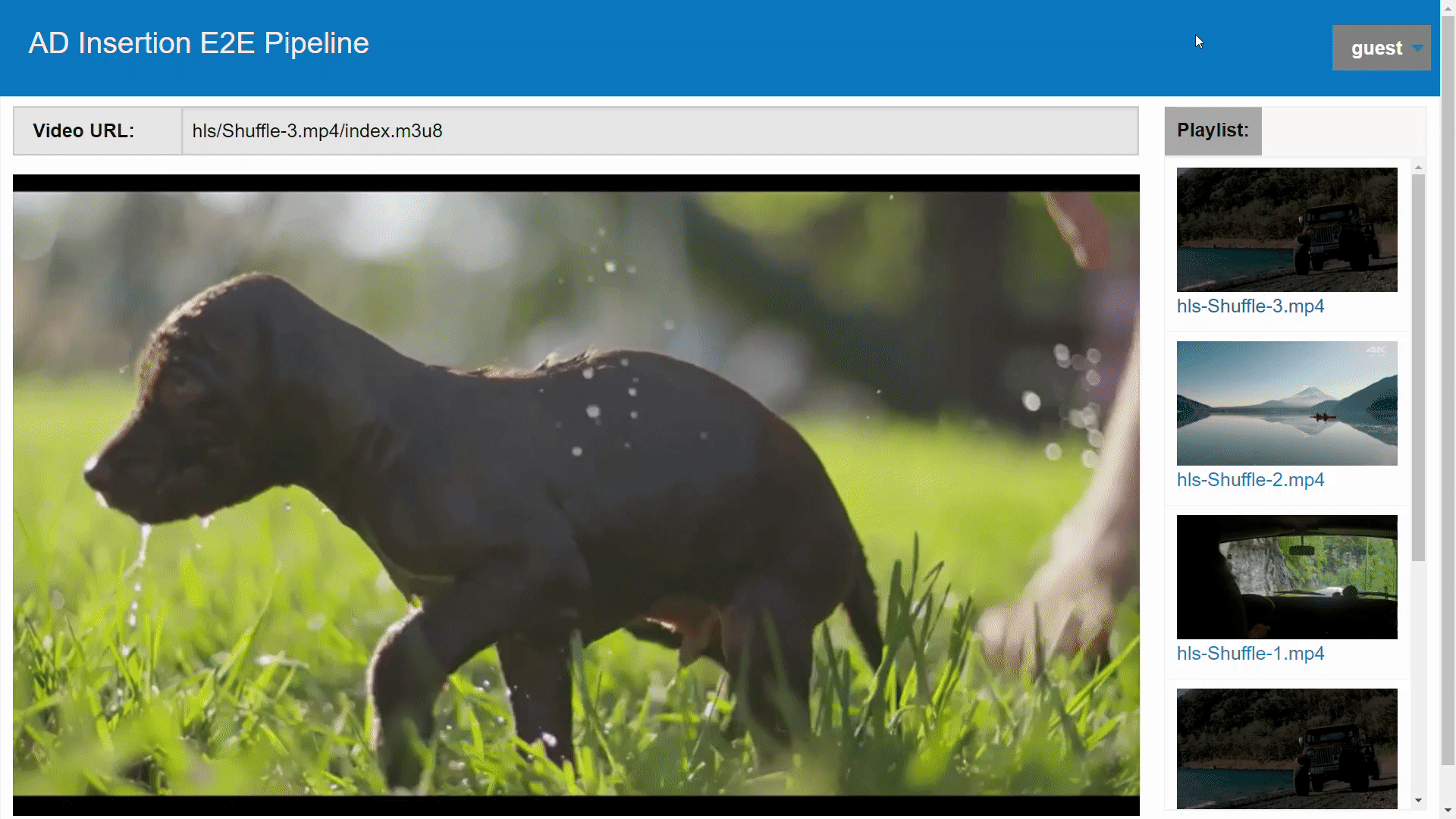The E2E sample implements a server-side AD insertion system, which features on-demand video transcoding and streaming, and AD insertion based on video content analysis.
The Content Provider service serves original content, with on-demand transcoding, through the DASH or HLS streaming protocol. The AD Insertion service analyzes video content on the fly and inserts AD, with transcoding if needed, into the video stream at each AD break slot.
See Also: Demo Video
The sample is powered by the following Open Visual Cloud software stacks:
- The FFmpeg-based media transcoding software stack is used to transcode video or Ad content to DASH or HLS during playback. The software stack is optimized for Intel® Xeon® Scalable Processors.
- The FFmpeg-based media analytics software stack is used, with
FRAMEWORK=ffmpeg, to analyze video content for objects, emotion and faces during playback. The software stack is optimized for Intel Xeon Scalable Processors and Intel VCAC-A. - The GStreamer-based media analytics software stack is used, with
FRAMEWORK=gst, to analyze video content for objects, emotion and faces during playback. The software stack is optimized for Intel Xeon Scalable Processors and Intel VCAC-A.
-
Timezone: Check that the timezone setting of your host machine is correctly configured. Timezone is used during build. If you plan to run the sample on a cluster of machines managed by Docker Swarm or Kubernetes, please make sure to synchronize time among the manager/master node and worker nodes.
-
Build Tools: Install
cmakeandm4if they are not available on your system. -
Docker Engine:
- Install docker engine. Make sure you setup docker to run as a regular user.
- Setup docker swarm, if you plan to deploy through docker swarm. See Docker Swarm Setup for additional setup details.
- Setup Kubernetes, if you plan to deploy through Kubernetes. See Kubernetes Setup for additional setup details.
- Setup docker proxy as follows if you are behind a firewall:
sudo mkdir -p /etc/systemd/system/docker.service.d
printf "[Service]\nEnvironment=\"HTTPS_PROXY=$https_proxy\" \"NO_PROXY=$no_proxy\"\n" | sudo tee /etc/systemd/system/docker.service.d/proxy.conf
sudo systemctl daemon-reload
sudo systemctl restart docker mkdir build
cd build
cmake ..
make See also how to customize the building process with Build Options.
By default, DASH/HLS segments are generated on the fly during playback, which requires a powerful server platform to keep up with the load. If unsure, it is recommended that you use the following commands to pre-generate DASH/HLS segments:
#content segment
make dash # take a coffee break?
make hls # take a walk?!
# ad segment
make addash
make adhlsUse the following commands to start/stop services via docker swarm (see also Docker Swarm Setup).
make update # optional for private registry
make start_docker_swarm
make stop_docker_swarm Use the following commands to start/stop services via Kubernetes (see also Kubernetes Setup):
make update # optional for private registry
make volume
make start_kubernetes
make stop_kubernetes Launch your browser and point to https://<hostname> to see the sample UI. Double click on any video clip to play the stream and see ADs got inserted during playback.
- For Kubernetes/Docker Swarm,
<hostname>is the hostname of the manager/master node. - If you see a browser warning of self-signed certificate, please accept it to proceed to the sample UI.




